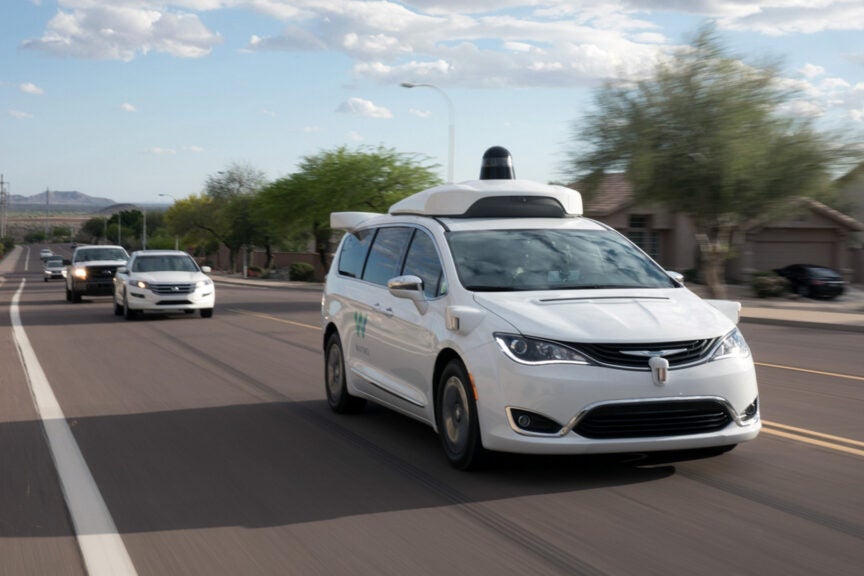Unwanted Tours: Waymo’s Robotaxi Takes Passengers on an Unexpected Journey Around Phoenix Airport
In an unexpected twist that has both amused and puzzled travelers, Waymo’s autonomous robotaxis have been spotted giving passengers unplanned scenic tours around the Phoenix Airport parking lot. This intriguing phenomenon raises questions about the reliability of self-driving technology and how it impacts the traveler experience. As these robotaxis continue to navigate the complexities of urban environments, riders are left wondering whether their experience is a delightful bonus or an inconvenience.
The Rise of Autonomous Transportation
Waymo, a pioneer in autonomous vehicle technology, has been at the forefront of self-driving innovation. With its fleet of robotaxis now operational in various parts of Phoenix, the company aims to revolutionize mobility by providing a safe, efficient, and convenient alternative to traditional taxis and ridesharing services.
The concept of autonomous vehicles is not merely a futuristic ideal; it is a burgeoning reality. Waymo’s vehicles utilize a sophisticated array of sensors, cameras, and artificial intelligence to navigate their surroundings. By continuously collecting data from their environment, these vehicles learn to adapt to changing conditions and improve their performance over time.
What Are the Unwanted Tours?
Recently, reports have surfaced about Waymo’s robotaxis taking passengers on unintended journeys around the Phoenix Airport parking lot. Instead of heading directly to their intended destinations, some riders found themselves circling the expansive parking area, offering them an unplanned tour of the surroundings.
While some passengers have found this experience amusing—capturing the moment on social media and sharing their unexpected adventures—others have expressed frustration at the detours. The question remains: are these unwanted tours a glitch in the system or a mere quirk of the technology?
The Passenger Experience
The reactions of passengers experiencing these unwanted tours have been mixed. For some, the experience is reminiscent of a scenic drive, providing an opportunity to see parts of the airport they might never have noticed otherwise. One traveler, who shared their experience online, remarked, “I never thought I’d get a mini tour of the airport parking lot! It was actually quite fun.”
Conversely, other passengers have reported feeling anxious or confused about the situation, particularly if they were in a rush to catch a flight. In these instances, the unexpected detours turned into a source of stress rather than enjoyment. The balance between novelty and inconvenience highlights a critical aspect of autonomous technology: user expectations.
Understanding the Technology Behind the Tours
To comprehend why these unwanted tours occur, it’s essential to delve into the technology that powers Waymo’s robotaxis. The vehicles rely on a combination of Lidar, radar, and high-definition maps to navigate safely. However, the complexity of urban environments, especially around busy areas like airports, can pose challenges.
- Sensor Limitations: While Waymo’s sensors are advanced, they can struggle with certain conditions, such as heavy traffic or unexpected obstacles, leading to hesitancy in navigation.
- Map Accuracy: The maps used by the robotaxis must be constantly updated to reflect changes in road layouts, construction, or other alterations in the environment.
- Passenger Inputs: Sometimes, the robotaxis may misinterpret passenger destinations, leading to unplanned routes that result in scenic detours.
The Implications of Unwanted Tours
The occurrence of unwanted tours raises significant questions about the future of autonomous transportation. As more cities adopt self-driving technology, understanding and addressing these challenges is imperative for the success and acceptance of the service.
Key implications include:
- User Trust: Building trust among passengers is crucial. If riders feel uncertain about the vehicle’s ability to take them directly to their destination, they may be less inclined to use the service.
- Operational Efficiency: Waymo and other autonomous vehicle companies must prioritize improving their navigation systems to minimize such detours and enhance overall efficiency.
- Regulatory Considerations: As self-driving technology advances, regulatory bodies will need to adapt to ensure that safety and reliability standards are met.
Potential Solutions and Future Directions
To address the phenomenon of unwanted tours, several strategies can be implemented:
- Enhanced Navigation Algorithms: Investing in improved algorithms that can better interpret real-time data and predict passenger behavior could significantly reduce unnecessary detours.
- Feedback Mechanisms: Implementing systems for passengers to provide immediate feedback on their experiences can help Waymo fine-tune its technology and service.
- Passenger Education: Educating passengers about the technology and its current limitations can help set realistic expectations and mitigate frustration.
Conclusion
Waymo’s robotaxi service is undoubtedly a leap forward in the realm of transportation, showcasing the potential of autonomous technology. However, the recent reports of unwanted tours around the Phoenix Airport parking lot remind us that this technology is still in its developmental stages. As the industry continues to evolve, addressing these challenges will be paramount in ensuring that passengers receive a reliable and enjoyable experience.
Ultimately, the balance between innovation and user satisfaction will determine the success of autonomous vehicles. As with any cutting-edge technology, the journey may be filled with unexpected turns, but it’s these very experiences that often lead to greater understanding and improvements in the future.
See more Future Tech Daily

